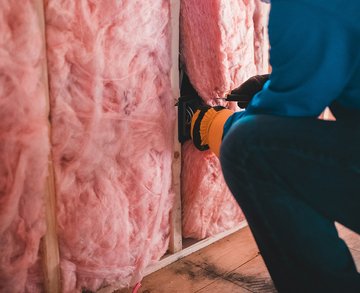In a world where climate change is at the forefront of our minds, taking steps towards understanding and reducing our carbon footprint has become essential. This is especially important where our homes and properties are concerned.
Whether you’re a homeowner, tenant or prospective buyer, knowing the carbon footprint of a property is crucial in order to make informed decisions about your home’s sustainability. Not only that, but the energy efficiency of a property can be a significant factor for your wallet, too.
Make Environmentally Conscious Choices
In this article, we guide you through the process of checking the carbon footprint of a property in the UK, so that you’re equipped with the tools to make environmentally conscious choices.
Assessing energy usage
The first step to check the carbon footprint of a property is to assess its energy usage. This is paramount to calculating the carbon footprint, as daily energy usage within the property will undoubtedly be one of the biggest contributors to its carbon emissions. To assess energy usage, a good place to start is by checking energy bills from the previous year.
You can then compare that data against the typical usage for a property of a similar size in the same geographical area, and identify any improvements that could be made. For example, there might be outdated appliances that are consuming large amounts of energy. By replacing these, the emissions could be reduced significantly.
Check the EPC rating
In the UK, properties are awarded EPC (Energy Performance Certificate) ratings depending on their energy efficiency. They’re rated on a scale from A to G, with A being the most efficient and G being the least. Each certificate is valid for ten years, but a new one can be requested if a property has been renovated in that time. Properties scoring on the higher end of the scale will typically have several areas of energy loss, such as drafts under doors, poor insulation or outdated heating systems. Fortunately, the EPC will also give specifics on improvements that could be made to increase the rating.
The rating is designed to give prospective tenants and buyers an idea of how much they could expect their energy bills to be when living in a property, helping them to make environmentally and economically friendly decisions.
Energy sourcing
While energy usage is important, it’s also important to consider where that energy comes from. Renewable energy sources such as solar panels, wind turbines and heat pumps can all help to offset the carbon emissions from traditional energy sources. Meaning if a property has a renewable energy supply, there could be a significant reduction in its carbon footprint.
If you’re considering investing in a renewable energy source for a current or prospective property, it’s important to establish just how much they could actually generate. Factors such as the availability of sunlight and wind combined with the property's orientation will all affect how much energy can be generated, so it’s important to discuss your options with a professional before deciding. This way, you can find out the best way to incorporate renewable power into your property and in turn reduce its carbon footprint.
Building a greener future
Checking the carbon footprint of a property is a crucial step towards curating a more sustainable future. Whether you’re looking to buy a new home or make improvements to an existing property, the steps outlined in this article will guide you in the right direction. By taking action now and formulating a plan, you’ll be one step closer to a green future.





